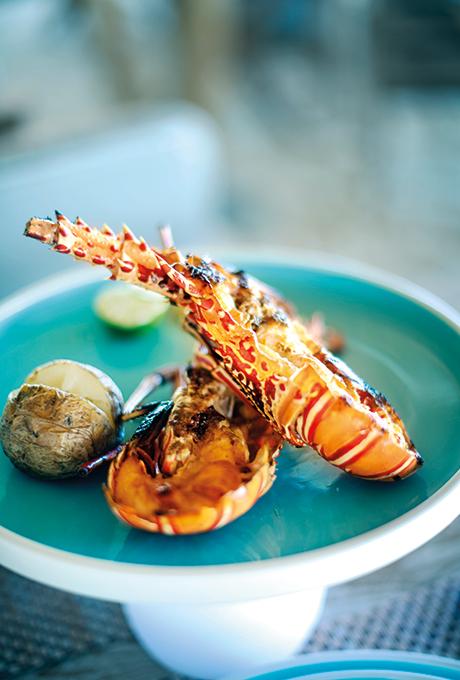
To write about the Maldives is a daunting task. What fresh, original insights can I provide on an island nation whose beauty has been rhapsodised as far way back as the 14th century when Moroccan explorer Ibn Battuta called it ‘one of the wonders of the world’?
How am I to trump that, or the innumerable odes travel writers across the centuries have written to this archipelago of 1,192 islands nestled in a double strand across the Indian Ocean?
[Secret no more? In El Nido, hundreds of beaches, one enchanting experience]
I could smother my sentences with enough adjectives to turn a thesaurus blue, but it would pale in front of the azure enigma that are the waters of the Maldives: swathes of sapphire as far as the eye can see, broken by the hypnotic turquoise of the lagoons of sometimes oval, sometimes circular coral islands.
‘There, I’ve gone and done it – couch the splendour of Maldives in tacky colour-based clichés,’ I think to myself, but my thoughts are drowned out by the roaring engine of the twin otter seaplane of the Trans Maldivian Airways that I’m sat in, gazing at the Indian Ocean from approximately 5,000 feet above sea level.
Clichés (and the backrest of the seat in front of me) are all that I can white-knuckle on to as the natural spectacle that rolls out beneath leeches me of words.
It must have been after his Maldivian sojourn that Ibn Battuta famously said ‘travelling, it leaves you speechless.’
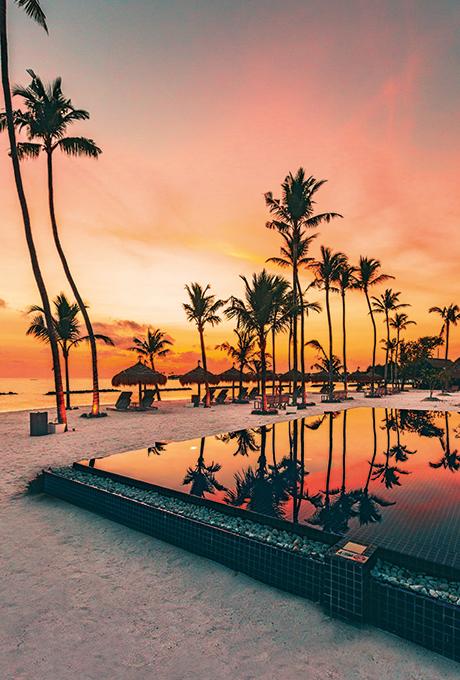
Luckily, the second half of that over-worn quote is ‘it then turns you into a storyteller’, and that holds very true of my first visit to Maldives – a three-day trip to the newly-opened Emerald Maldives Resort and Spa. On the seaplane ride back to the capital Male, which is a 40-minute flight from Raa Atoll that the resort is on, I’m teeming with experiences I want to recount (we’ll skip the airsickness that kicked in as we lurched in and out of three different islands picking up passengers during inclement weather). And most importantly I’m bursting at the seams with a newfound appreciation for nature.
Forget that Maldives epitomises the desert island idyll that honeymooners flock to, or the restorative seclusion – that panacea to all urban problems from stress to social media burnout – offered to weary urbanites. My endorsement of Maldives is hinged simply on the education it offers – about climate change, marine biodiversity, heck, even geography.
My 40-minute seaplane ride is an aerial wake-up call – the glorious, concentric circles of teal-fringed lagoons and floury white beaches are almost on level with the blue waters of the ocean, hammering home how the topography of these islands turn them into sitting ducks for climate change in a way no geography lesson in school could. With 80 per cent of its land area lying a metre below average sea level, Maldives is the world’s flattest country.
Which inadvertently puts it in the frontlines of the climate crisis. The devastating 2004 tsunami and the destruction it left in its wake is a stark reminder. While the bird’s eye-view compels me to look into the eye of the beast that is climate change, it also directs my gaze to the beauty, the sheer artistry of our planet. There are islands perfectly aligned into a line, resembling stepping stones for giants to skip on and cross to the other side of the ocean, and the colours….
A bolt of blue from within an expanse of blinding blue – when the sun peeks out from behind the clouds it’s as if someone turned the saturation levels high on an image. Words on a page describing how the islands flank the equator both on the northern and southern hemisphere (8 degree north to 1 degree south) truly register when I see them scattered out, perched amidst columns of clouds that reach from the horizon to the skies as if they’re a stairway to heaven.
But how could that be when I’m looking at paradise below?
When the seaplane finally taxied on to the private permanent jetty (at the Emerald Maldives Resort and Spa), it’s sunset. Lulled by the engine’s drone and the soothing sights, it felt like time had stopped. But much like the tides around the reefs, time stops for no one, and at Fasmendhoo Island it races an hour ahead of Male.
The clock’s tick-tock is silenced by the leisurely pace of life on the resort’s 20-hectare island, comprising 60 Beach Villas and Water Villas each, for the next three days. I find myself settling into an unhurried pace unique to dissolute island life – relaxing Balinese massage in the middle of the day at the Emerald Spa, a gorgeous little sanctuary tucked into a corner of the island with its own hot tub, picturesque koi pond and 10 villa-style treatment rooms, long ambling walks through the resort’s sandy paths, mostly because I’m lost and can’t find my way to four restaurants or state-of-the-art gym (it’s a huge island), and cycling around the resort on the bicycle each Water Villa is equipped with.
Mind you, all this is once I’ve spent a considerable amount of time mutely drinking in the grandeur of my overwater villa, specifically the cavernous bathroom – a miniature marble palace with a ceiling-to-floor window overlooking the patio and the ocean, a sunken tub, walk-in shower and closet, and the sundeck fitted with a seating area, a hammock floor hovering over the water to lounge with a book on, and steps leading down from the sundeck into the sea.
Uh oh, I’ve hit my first roadblock on this journey. I can’t swim.
In a country that’s 99 per cent water and the sighting of land is a welcome surprise, being a landlubber is an inconvenience. One that instantly eliminates much of what I can do on a tropical island in terms of activity. Lounging on the sundeck munching my way through the minibar snacks (they’re replenished daily as part of the deluxe all-inclusive deal) is tempting, but it loses its charm after the first two times. The only non-swimmers I see on the island are the honeymooners who descend on the white sand beaches in droves daily, strolling hand-in-hand while a resort staff follows them around, camera in tow to capture frame-worthy moments of their romance, or families with kids who are busy building sand castles or head to the Dolphin Kids’ Club where a myriad of activities and games keep tots busy. All of these are out of the question for me.
My inability to hold myself afloat in a body of water makes for a riveting conversation starter during dinner that night at Le Asiatique, the in-house Asian restaurant. Not that diners are hard-pressed for entertainment at the eatery – a live teppanyaki cooking show keeps patrons engrossed and sated.
While the crowd oohs and ahs at the chef’s pyrotechnic skills, the burning question on my mind is will Maldives stick to its stereotypical label of R&R (romance and relaxation) or will it lend it some to that intrepid sense of adventure so many explorers and merchants experienced while sailing through erstwhile strategic port on the historic Spice Route. Parasailing, kayaking and jet-skiing are activities the resort’s Water Sports Centre offers guests but they’re out of the running because we’re experiencing a tropical storm.
The sky is a hard slate grey and even that can’t dull the turquoise trance of the lagoon lapping against the villa stilts.
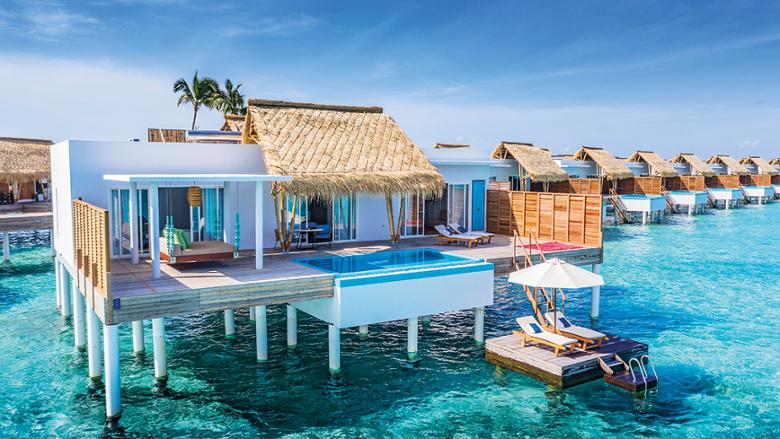
Next day, when the storm relents and the raging seas calm down, I decide to test my luck and sign up for one of the resorts many snorkelling excursions, encouraged by a fellow journalist who gushes about her experience of swimming in the open waters with Manta Rays earlier that morning. While that requires serious swimming chops, snorkelling – various internet forums and an ad-hoc survey of other visitors tell me – doesn’t require you to be a skilled swimmer. Before we board the dhoni, a traditional Maldivian wooden boat that is a testament to the craftsmanship of Raa Atoll’s carpenters, I express my discomfort to Jessi, the PADI-certified Italian diving instructor leading the excursion. She chuckles and reassures me that we won’t venture too far out from the shore and that a buoy and life-jacket (and my will power to exert some core strength) should ensure I’ll stay afloat.
Once the experienced swimmers dive off the boat in deeper waters of an uninhabited island’s lagoon, Jessi signals it’s our turn as the Dhoni inches closer to the shallow end of the lagoon. When it’s my turn to jump I’m paralysed with fear. The buoy and Jessi’s reassuring presence in the water are waiting to hoist me, there’s also the life-jacket fastened around me in a vice-like grip but the fear’s got its claws in and I’m lightheaded and dizzy for a few minutes.
Jumping into the open sea when you’re unable to fathom its depth is an out-and-out leap of faith and it’s hard to not let self-preservation kick in, especially when the crew are offering in Dhiyevi and broken English to push me over as I vacillate on the edge of the boat. There’s bile rising in my throat but I plunge into the deep blue and while the feeling of not having solid ground or even the tiled floor of a pool under my feet as the water explodes around me is terrifying but it’s worth what follows. Jessi signals through her mouthpiece to attempt to float horizontally and submerge my face partially into the water.
For a second time during this trip I’m lost for words, completely spellbound by the surreal underwater world teeming with shoals of cuttlefish, striped sweetlips, electric purple sea anemone waving in the current, cobalt blue surgeonfish and the steep drop of the reef slope ringing home the fact that I’m floating around the crown of an underground volcano or seamounts as they’re known; atolls are their sunken crowns.
No David Attenborough documentaries or biology lessons on the animal kingdom and biodiversity had ever prepared me for the majesty of all that I was witnessing. And I was only witnessing a minuscule cross-section of the over 2,000 different aquatic species that populate Maldives’ waters.
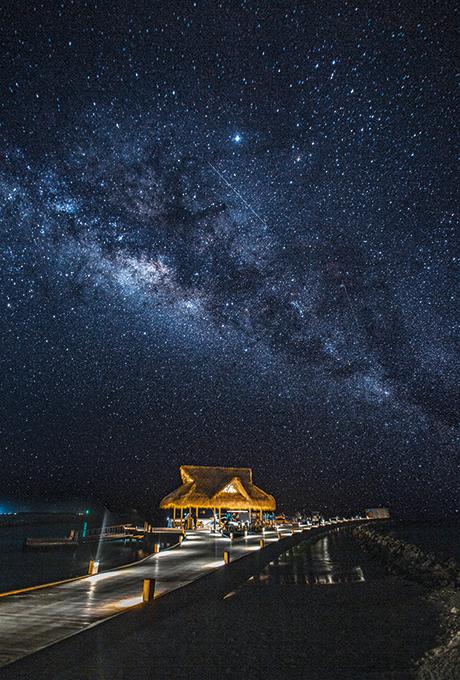
As we paddled around for a good 40 minutes Jessi pointed out parts of the reef that was bleached (leeched of colour to a bone colour) as a result of global warming, a rampant issue in the Maldives that authorities are trying to overcome by introducing resilient forms of coral that can weather a rise in water temperatures. When the snorkelling mask comes off aboard the dhoni, I’m not sure what’s salt from the seawater and what’s residue of tears of joy, of gratitude.
Maldives is considered a once-in-a-lifetime destination, earmarked for milestone events like a wedding or a honeymoon, as access to this paradisiacal scenery comes at an eye-watering cost (the return seaplane transfers alone costs you north of Dh1,600 per person) because of its one-island-one-resort tourism law that saw remote atolls being leased out to luxury hotels. But it’s on the dhoni ride back to the resort that it hits me that I’ve probably witnessed a part of our planet’s arresting scenery that could die out in the next couple of decades, which is what makes this truly a once-in-a-lifetime visit.
Which makes it essential to ensure that the resorts you’re visiting are as sustainable as possible and doesn’t track a heavy carbon footprint.
As the new kid on the block, Emerald Resort and Spa has pulled all the stops to ensure it’s sustainable, right from the use of solar panels to heat water throughout the resort, to an in-house farm, the use of Langhi Langhi leaves for the thatched roofs and the use of bamboo over timber in the construction of the luxurious villas. Food waste on the resort is composted and as of December, the resort was on its way to becoming plastic-free.
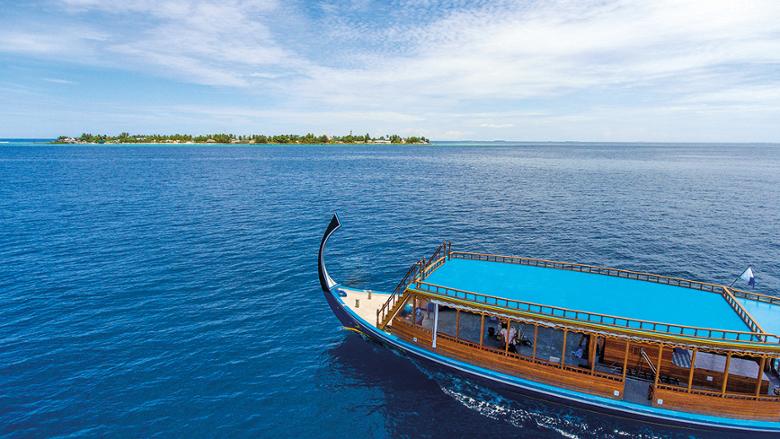
A coral repopulation project in conjunction with a marine biologist is also on the cards and will attempt to bring the house reef back to life.
Throughout the trip, at various points, I’m petrified about sinking – aboard the seaplane that feels like a tin box beholden to the whims of the vast ocean, the dhoni when it encounters a cloudburst and the split-second before snorkelling. It is during a storm-free sunset though, that I sink – well my heart did – under a sense of gratitude and awe at the illustrious Maldivian sunset that smears the skies in haunting brushstrokes of mango-peach orange and purple haze. There’s a sense of urgency to the sunsets at odds to the otherwise laidback vibe of the island, reminding me that if we don’t do enough to tackle climate change we’d be robbing ourselves and a whole new generation of explorers of the wonders of the world and the storytellers they can make.
Valentine's Day offer
The Emerald Maldives Resort and Spa has two ongoing deluxe all-inclusive packages. The Family Offer gets you 20 per cent off best available rate for a minimum of 7 night’s stay for a maximum of two adults and two children, including a complimentary 60 minutes massage for two adults and one in-room family breakfast.
The Valentine’s Day offer running until February 23 includes a complimentary villa upgrade, 60-minute couples massage, an in-room breakfast and a Valentine’s Day Gala Dinner at Aqua Restaurant.
Beach Villas start from Dh3,224 per night in low season. Visit emerald-maldives.com.



